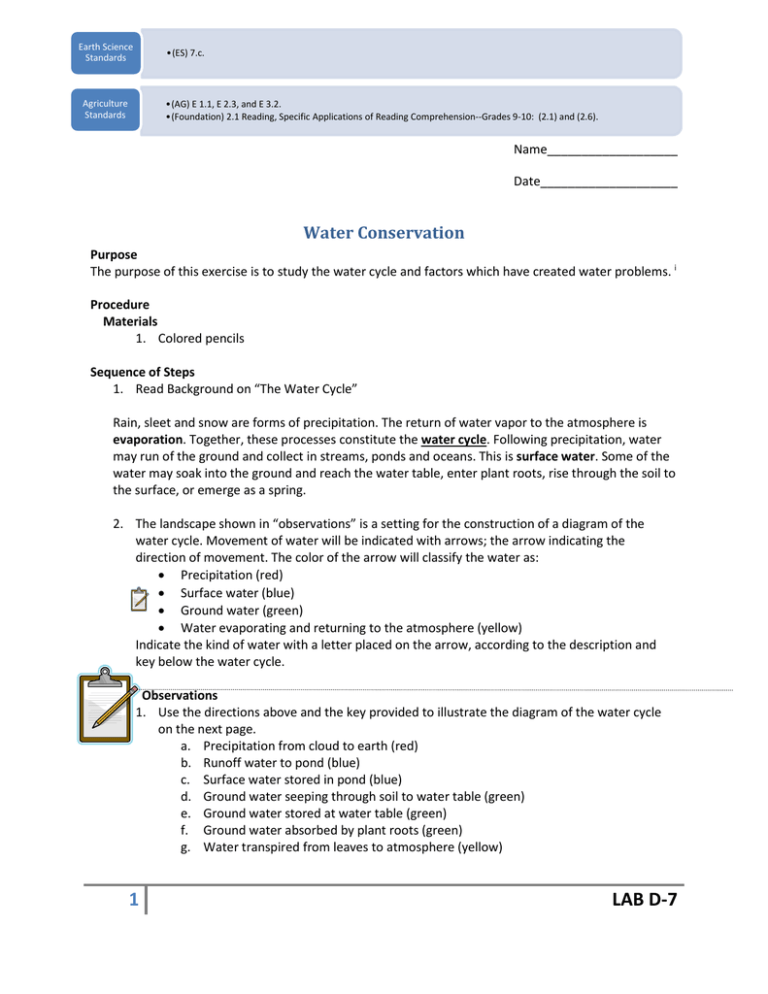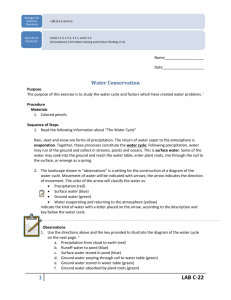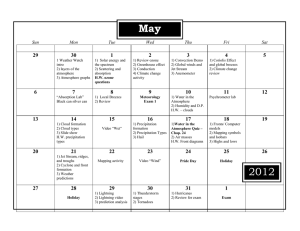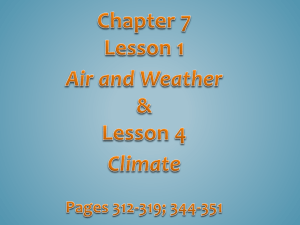D-7 Water Conservation
advertisement

Earth Science Standards •(ES) 7.c. Agriculture Standards •(AG) E 1.1, E 2.3, and E 3.2. •(Foundation) 2.1 Reading, Specific Applications of Reading Comprehension--Grades 9-10: (2.1) and (2.6). Name___________________ Date____________________ Water Conservation Purpose The purpose of this exercise is to study the water cycle and factors which have created water problems. i Procedure Materials 1. Colored pencils Sequence of Steps 1. Read Background on “The Water Cycle” Rain, sleet and snow are forms of precipitation. The return of water vapor to the atmosphere is evaporation. Together, these processes constitute the water cycle. Following precipitation, water may run of the ground and collect in streams, ponds and oceans. This is surface water. Some of the water may soak into the ground and reach the water table, enter plant roots, rise through the soil to the surface, or emerge as a spring. 2. The landscape shown in “observations” is a setting for the construction of a diagram of the water cycle. Movement of water will be indicated with arrows; the arrow indicating the direction of movement. The color of the arrow will classify the water as: Precipitation (red) Surface water (blue) Ground water (green) Water evaporating and returning to the atmosphere (yellow) Indicate the kind of water with a letter placed on the arrow, according to the description and key below the water cycle. Observations 1. Use the directions above and the key provided to illustrate the diagram of the water cycle on the next page. a. Precipitation from cloud to earth (red) b. Runoff water to pond (blue) c. Surface water stored in pond (blue) d. Ground water seeping through soil to water table (green) e. Ground water stored at water table (green) f. Ground water absorbed by plant roots (green) g. Water transpired from leaves to atmosphere (yellow) 1 LAB D-7 h. Water evaporating from soil surface into atmosphere (yellow) i. Water evaporating from surface of pond (yellow)ii Conclusions: 1. What internal/external sources of energy drive the movement of water and matter on the Earth’s surface? 2. Explain the problems created by each of the following practices related to water: a) Pumping water from deep wells for air-conditioning systems in buildings. b) Draining swamps and marshes. c) Cutting forests in watershed (hilly) regions. d) Cutting bottomlands and flood plains along large rivers. e) Losing top soil through erosion. i ii Agricultural Biology Curriculum Lesson Plans. Sacramento: California State Department of Education, Agriculture Education Unit, 1990. "The Water Cycle." Mordialloc Cluster. 3 Oct 2008 <www.mordialloccluster.vic.edu.au>. 2 LAB D-7








